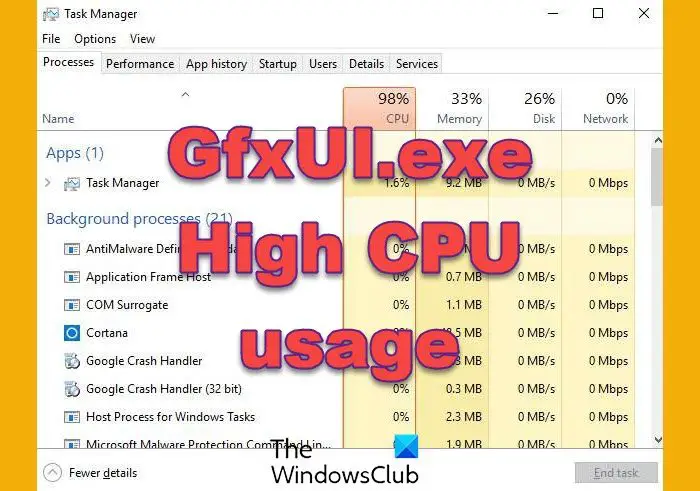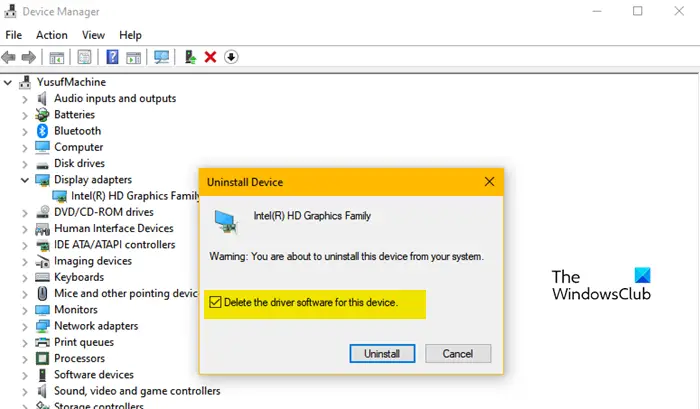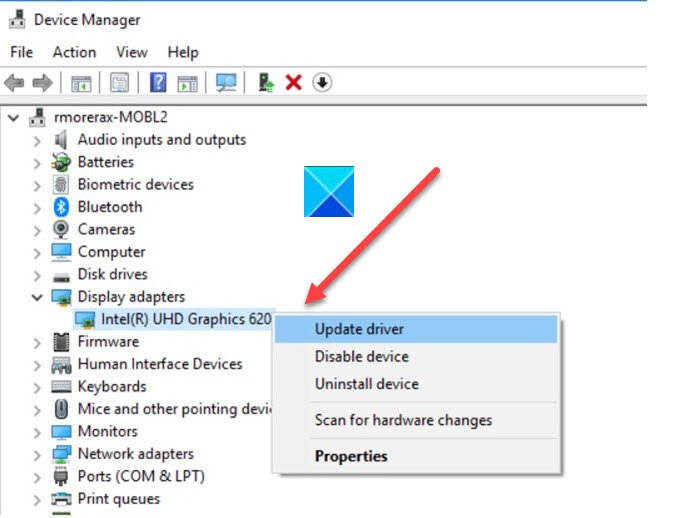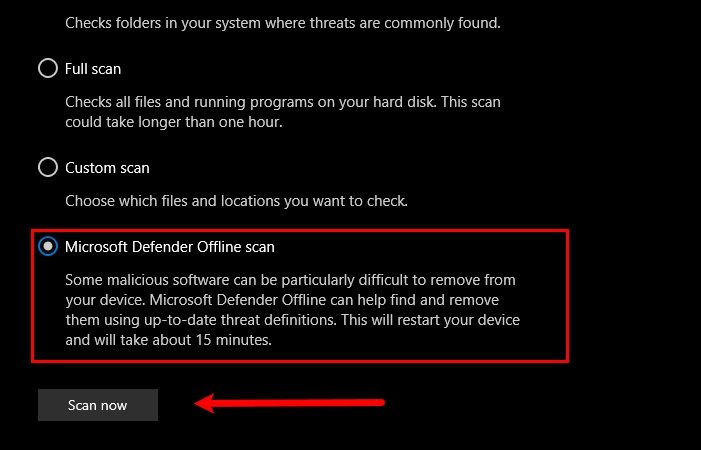If in your Task Manager you see a process named GfxUi.exe consuming a lot of your resources, and are wondering what it is, then this post will be able to help you. Even though it is a genuine process, it is not supposed to consume high CPU, Memory or Disk usage. So, if GfxUI.exe is causing high CPU usage on your computer, then check out the article, to resolve the issue.

What is GfxUI.exe?
GfxUI is a process of Intel GPU and the legit file is located in the C:\Windows\System32 folder. It is a genuine process and is usually seen on computers with both dedicated and integrated graphics. However, this doesn’t mean that it will be absent on a system with just integrated GPU.
If you don’t have Intel Graphics, then you probably don’t have this process running on your computer. It could then well be malware and it would be best to check its Properties and get it scanned by your antivirus software.
Fix GfxUI.exe High CPU usage on Windows 11/10
If GfxUI.exe is causing high CPU usage on your Windows computer, then go through the following solutions to resolve the issue.
- Restart your computer
- Reinstall the Intel Graphics Driver
- Update or Rollback your Graphics Driver
- Scan for viruses and malware
- Change Power Plan
- Use Performance Monitor.
Let us talk about them in detail.
1] Restart your computer
Restart your computer and see if it makes the problem go away.
2] Reinstall Intel Graphics Driver

As mentioned earlier, if there is some issue with your Intel Graphics Driver, the process will be triggered and end up taking a toll on your CPU. Therefore, we need to fix the corrupted driver, the best way to do that is by reinstalling the driver. Follow the given step to do the same.
Note: Your computer will go blank for some time, so, do not panic.
- Open Device Manager either by searching it out of the Start Menu or by Win + X > Device Manager.
- Then, expand Display Adapters, right-click on your Intel driver, and select Uninstall device.
- Tick Delete the driver software for this device and click Uninstall. Your system will go blank and you may see a black or grey screen for a second or two.

To reinstall the driver, click on the Scan for hardware changes button or restart your computer. Either of them will work, but the former is less time-consuming. Your Graphics Driver will be installed, but not the Intel one, you can go to Display Adapter and see the name of the driver that’s installed. Even though this will resolve the issue, you will not get the benefit of an Intel Graphics Driver, that’s why we are going to visit Intel.com and download the latest version of Intel Graphics Driver, then install it on your computer
Finally, you can restart your system once, and hopefully, your issue will be resolved.
Read: Fix GfxUI application error on Windows.
3] Update or Rollback your Graphics Drivers

If the issue is not resolved by updating the driver, then chances it’s not corrupted. Instead, there is some bug that’s causing the issue. But, we are not Intel developers, so, we can do anything to remove the bug from this version of the driver, but what we can do is switch to a different built and see if the is resolved.
First of all, you should try to update your Graphics Driver. And if there is no update available, then you need to roll back and go to the previous version which was bug-free, and wait till the developers release a different version of the driver.
Following are some of the methods to update your Graphics Driver.
- Update your Windows as it will automatically install the latest version of the driver.
- Download the latest version of the driver from the manufacturer’s website.
If there is no update available, then follow the given steps to roll back your driver.
- Open Device Manager
- Expand Display Adapters.
- Right-click on your Intel driver and select Properties.
- Then go to the Driver tab and select Roll Back Driver.
Wait for the process to complete and hopefully, your issue will be resolved.
4] Scan for viruses and malware

Even though it is a genuine process, a virus can masquerade GfxUI. So, you should immediately deploy Windows Defender to scan your computer and fix the issue.
Follow the given steps to do the same.
- Open Windows Security by searching it from the Start Menu.
- Go to Virus & threat protection > Scan options.
- Select Microsoft Defender Offline scan > Scan now.
Wait for the process to complete and hopefully, your issue will be resolved.
Read: What is igfxTray.exe? Is it safe?
5] Change Power Plan
Change your Power Plan and see if that works for you. See if using a High-Performance power plan helps.
6] Use Performance Monitor
Use the built-in Performance Monitor to troubleshoot the issue further.
TIP: This post will help you Troubleshoot Intel Graphics Drivers problems.
Why is my CPU usage so high in Windows 11?
You may see high CPU usage on your computer because of various reasons. From corrupted system files to viruses and malware, there are a lot of variables that can contribute to making your computer slow. We have created a guide to resolve the high CPU usage issue. So, we would recommend you check it out in order to fix the problem.
Also read: How to check, Lower or Increase CPU usage in Windows.
Leave a Reply